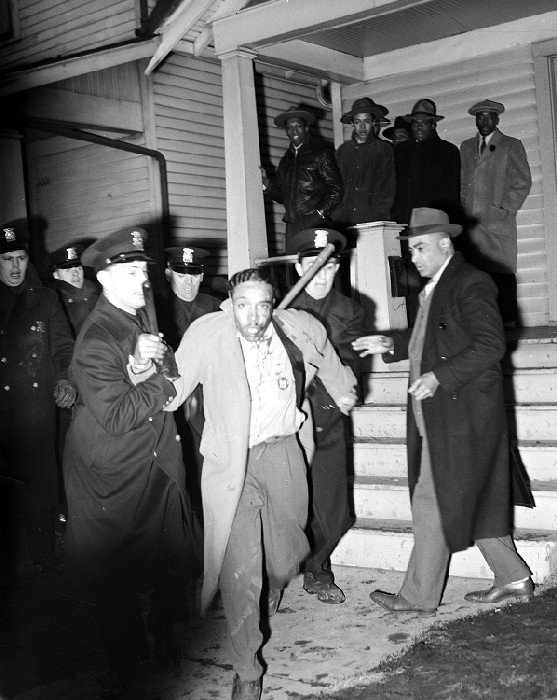Table Of Content

Encountering the women’s rights movement in the early 1850s, and encouraged by other women leaders, notably Lucretia Mott, she continued to appear before suffrage gatherings for the rest of her life. In 1945, Elizabeth Catlett created a print entitled I'm Sojourner Truth as part of a series honoring the labor of black women. The print is in the Metropolitan Museum of Art's collection.[116] She would later create a full-size statue of Truth, which was displayed in Sacramento, California. As Truth's reputation grew and the abolition movement gained momentum, she drew increasingly larger and more hospitable audiences. She was one of several escaped enslaved people, along with Douglass and Harriet Tubman, to rise to prominence as an abolitionist leader and a testament to the humanity of enslaved people. In 1997, Sister Joan Fisher, PHJC saw that the area needed a center to reach out to women and children experiencing homelessness in Gary.
Sojourner Truth House Day Center Program
All beneficiary gifts pass directly to Sojourner Truth House without going through the probate process. These gifts go right to work to help women and children in northwest Indiana. Her renown spread during the next decade, as she spoke before abolitionist and suffragist audiences in Ohio, New York (where she met Harriet Beecher Stowe, who later wrote about Truth as "the Libyan Sibyl"), and Michigan.
Sojourner Truth's Husband and Children
When Dumont came to reclaim his “property,” the Van Wagenens offered to buy Isabella’s services from him for $20 until the New York Anti-Slavery Law emancipating all enslaved people took effect in 1827; Dumont agreed. Towanda Mullins is the chair of the Sojourner Truth Project, and has overseen a community process including the Akron alumnae chapter of her sorority, Delta Sigma Theta; the local branch of the League of Women Voters; and other organizations. She is especially proud of a 2019 re-creation of a suffrage march in which Black women participated, even though leading white feminists of the time didn’t promote voting rights for Black men or women. In some ways, the Akron committee she leads has been the fulfillment of that dream deferred. In 1857, Truth moved to Michigan, where she joined a community of progressive Quakers called Harmonia.
Early Life as an Enslaved Person
Nothing remains of the town apart from its cemetery—its residents relocated after a tornado. Not long ago, a postal worker named Kevin Ailes in nearby Bangor, Michigan, was able to find the approximate location of Truth’s former home. An expert diver who’s located shipwrecks in the Great Lakes, Ailes consulted an 1873 map of Harmonia and saw that Truth had owned three plots, including the former sanctuary, in the village. That wasn’t new information, but Ailes cross-referenced that information with deeds and calculated the distance from known landmarks. Using a GPS app, he overlaid his geographic markers onto contemporary satellite images and was able to estimate the location of Truth’s residence—now underneath a corporate warehouse.
'Ain’t I A Woman?' Speech and Controversy
Sojourner Truth lived and worked in this New York home, now asking $2.4M - New York Post
Sojourner Truth lived and worked in this New York home, now asking $2.4M.
Posted: Thu, 30 Mar 2023 07:00:00 GMT [source]
Truth converted to Christianity and moved with her son Peter to New York City in 1829, where she worked as a housekeeper for Christian evangelist Elijah Pierson. She then moved on to the home of Robert Matthews, also known as Prophet Matthias, for whom she also worked as a housekeeper. After John Dumont reneged on a promise to emancipate Truth in late 1826, she escaped to freedom with her infant daughter, Sophia.
Amenities & services
In later years, this slogan was further distorted to “Ain’t I a Woman? ”, reflecting the false belief that as a formerly enslaved woman, Truth would have had a Southern accent. Sojourner Family Peace Center is the largest nonprofit provider of domestic violence prevention and intervention services in Wisconsin, serving nearly 8,000 clients each year.
Painter remains firm in her conviction that Robinson’s account is more accurate than Gage’s. Truth often stayed at Robinson’s home when in Ohio, and she may have even vetted his version before it appeared in the newspaper. In the meantime, Painter is working on yet another book about Truth, with the emphatic title Sojourner Truth Was a New Yorker and She Didn’t Say That.
The result of freedom
Her Civil War work earned her an invitation to meet President Abraham Lincoln in 1864. Even in abolitionist circles, some of Truth's opinions were considered radical. She sought political equality for all women and chastised the abolitionist community for failing to seek civil rights for Black women as well as men. She openly expressed concern that the movement would fizzle after achieving victories for Black men, leaving both white and Black women without suffrage and other key political rights. By 1860, Truth was living in Battle Creek, Michigan, in a household that included two daughters.
Although she's the director of the shelter, she has continued to do counseling with the women because she says it's why she became a social worker - to work directly with individuals. While the work of running a 46-bed shelter can be taxing, Grimes-Johnson unwinds on the bus ride home. She's a bus rider because driving is one of her biggest fears, she said.
She asks questions and gently prods the answers, guiding the women through the expectations and goals they will tackle to reshape and rebuild their lives. When asked what they expect from the shelter, the big word is safety for them and their children. They want a place where the pain and hurt will stop; a place to get back on their feet. Feminist theorist and author bell hooks titled her first major work after Truth's "Ain't I a Woman?" speech.[120] The book was published in 1981. In 1862, American sculptor William Wetmore Story completed a marble statue, inspired by Sojourner Truth, named The Libyan Sibyl.[70] The work won an award at the London World Exhibition. The original sculpture was gifted to the Metropolitan Museum of Art, in New York City, by the Erving Wolf Foundation in 1978.
STH Staff and Volunteers greet everyone with a welcoming smile and a promise to always treat them with honor and respect. Participants receive personalized case management services and individualized goal setting. This allows us to determine the most immediate needs and provide the right tools, resources, and referrals to begin the process of overcoming homelessness and rebuilding their lives. Whether parenting, addiction, mental health, occupational or educational, our classes are designed to identify the root causes of financial and/or emotional instability. These types of wrap-around services help to provide tools to overcome these barriers. While on-site, our participants enjoy freshly prepared breakfast and lunch, receive transportation to appointments, use our laundry facilities and have access to our onsite child enrichment program for their children.
Truth is remembered as one of the foremost leaders of the abolition movement and an early advocate of women's rights. Abolition was one of the few causes that Truth was able to see realized in her lifetime. The 19th Amendment, which enabled women to vote, was not ratified until 1920, nearly four decades after Truth's death. Truth met a number of leading abolitionists at Northampton, including William Lloyd Garrison, Frederick Douglass and David Ruggles.
The 9-year-old Truth, known as "Belle" at the time, was sold at an auction with a flock of sheep for $100. Her new owner was a man named John Neely, whom Truth remembered as harsh and violent. She felt she’d done everything right and wondered how she wound up at a domestic abuse shelter. Her healing journey took time and a lot of hard work, and thanks to your support, Sojourner was with her every step of the way. The word TRUTH adorns a stone wall, and pillars showcase a sketch of the old church and quotes from Truth. (The phrase “Ar’n’t I a woman?” won’t make an appearance.) Another pillar will list the names of Black women leaders in Akron’s history.
For many victims, the workplace remains their only safe connection to the outside world and their only opportunity for achieving independence from the abuser. For their abusers, work remains the only place where the victim can be consistently found after fleeing. Failure to appear at the hearing will result in a dismissal of the order.
Naming these post offices after these three extraordinary Michiganders is a fitting tribute to their incredible lives,” said Senator Stabenow. During the 1850’s, Truth settled in Battle Creek, Michigan, where three of her daughters lived. She continued speaking nationally and helped enslaved people escape to freedom.
Later, she unsuccessfully petitioned the government to resettle formerly enslaved people on government land in the West. Like another famous escaped enslaved woman, Harriet Tubman, Truth helped recruit Black soldiers during the Civil War. She worked in Washington, D.C., for the National Freedman’s Relief Association and rallied people to donate food, clothes and other supplies to Black refugees. Truth's powerful rhetoric won her audiences with leading women’s rights activists of her day, including Elizabeth Cady Stanton and Susan B. Anthony.

No comments:
Post a Comment